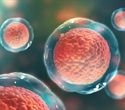What Stabilizes Tertiary Protein Structure
Intermolecular Forces in Tertiary Poly peptide Structure
Keeping the Shape of Proteins
Proteins are made of amino acrid chains, or polypeptides. Amino acids have a bones courage fabricated of an amino group and a carboxyl grouping, and differ in their side-bondage. These polypeptide chains of amino acids can be shaped as helixes or sheets, which come together to form a 3D construction. The 3D structure of proteins is referred to every bit its "tertiary structure".
The process of folding proteins into their tertiary structures is spontaneous and involves bonds and intermolecular forces to brand the structure stable, which are described beneath.
Disulfide Bonds
Disulfide bonds are formed between 2 sulfur (SH) atoms, which are found in the side-concatenation of the amino acid cysteine. When two cysteines are brought into close proximity in the tertiary structure, an enzyme called "protein disulfide isomerase" forms a disulfide bond between the ii SH groups. Due to the nature of the disulfide bond, information technology can be considered to be part of the chief construction of proteins, i.due east. the polypeptide.
Electrostatic Bonds and Van der Waals Forces
Some amino acids have a charged side-concatenation, which is either negative or positive. Negatively charged side-chains are attracted to positively charged side-bondage, while being repelled by some other negatively charged side-chains. When 2 contrary charged chains come together, they grade what is called a "salt bridge".
Van der Waals forces are as well similar to electrostatic bonds. The formation of Van der Waals forces depends on the shape of the side-chain; if the atoms within the side-chains of neighboring amino acids fit well, so Van der Waals strength is formed.
Hydrogen Bonds
Hydrogen bonds form between two atoms and a hydrogen atom. Atoms, such as oxygen, tin can exist covalently bound to hydrogen, and giving the hydrogen (H) in the OH group a slight positive charge due to the oxygen (O) alluring electrons. When this OH group comes across another atom with a slightly negative charge, such every bit oxygen, the hydrogen from the OH group reaches out to the oxygen cantlet and forms a bond. This is known as a hydrogen bond, and occurs between amino acids which accept what is called a polar side-chain.
Hydrophobic Interactions
Some amino acids accept side-chains which repel water, or are hydrophobic. These amino acids with hydrophobic side-chains are often found on the inside of proteins, and due to the hydrophobic nature of these amino acids they interact with ane some other past what is called hydrophobic "interactions".
Intramolecular Bonding in Proteins IB Biological science
How is the Tertiary Structure of Proteins Formed?
The 3rd structure of proteins is such that information technology is suited to the office of the protein. Proteins function in different environments, and thus each protein has dissimilar requirements.
For example, if a poly peptide works in a water-based surround, and so it is not advisable to accept hydrophobic amino acids in the department of the poly peptide which is in contact with the water. To avert this, hydrophobic amino acids are tucked abroad inside of the protein. So here, hydrophobic interactions would be keeping these hydrophobic amino acids together, while the "water-liking" (hydrophilic) amino acids on the exterior of the proteins volition class hydrogen bonds with the water.
The cell membrane is a hydrophobic environs, so the parts of proteins which will be within the cell membrane is unremarkably fabricated up of hydrophobic amino acids. These proteins tin likewise have regions which poke out of the membrane, and these outer regions are usually made upwards of hydrophilic amino acids.
The poly peptide α-keratin is plant in hair, pare and nails. The polypeptides which make upward α-keratin is shaped as a helix, and four of these coil together to form a protofibril. The protofibrils so get coiled into larger microfibrils, which are coiled over again to form macrofibrils. In the microfibrils, disulfide bonds can be formed, and the number of disulfide bonds changes the hardness of α-keratin; there are more disulfide bonds in the α-keratin constitute in nails, compared to the α-keratin found in peel and hair. This ensures that the nails are tough, while skin and hair are given enough construction while maintaining more than motility.
Farther Reading
- All Protein Content
- Poly peptide Production: Initiation, Elongation and Termination
- Protein Folding
- Amino Acids and Poly peptide Sequences
- Protein Complex Analysis
Last Updated: January 25, 2019
Citations
Please employ i of the following formats to cite this article in your essay, paper or report:
-
APA
Yokoyama, Maho. (2019, January 25). Intermolecular Forces in Tertiary Protein Structure. News-Medical. Retrieved on October 17, 2022 from https://www.news-medical.net/life-sciences/Intermolecular-Forces-in-Tertiary-Protein-Structure.aspx.
-
MLA
Yokoyama, Maho. "Intermolecular Forces in Tertiary Protein Construction". News-Medical. 17 October 2022. <https://world wide web.news-medical.net/life-sciences/Intermolecular-Forces-in-3rd-Poly peptide-Construction.aspx>.
-
Chicago
Yokoyama, Maho. "Intermolecular Forces in Tertiary Poly peptide Structure". News-Medical. https://www.news-medical.internet/life-sciences/Intermolecular-Forces-in-Tertiary-Poly peptide-Structure.aspx. (accessed October 17, 2022).
-
Harvard
Yokoyama, Maho. 2019. Intermolecular Forces in Tertiary Poly peptide Structure. News-Medical, viewed 17 October 2022, https://www.news-medical.cyberspace/life-sciences/Intermolecular-Forces-in-Tertiary-Protein-Structure.aspx.
Suggested Reading








What Stabilizes Tertiary Protein Structure,
Source: https://www.news-medical.net/life-sciences/Intermolecular-Forces-in-Tertiary-Protein-Structure.aspx
Posted by: gomerabst1968.blogspot.com



0 Response to "What Stabilizes Tertiary Protein Structure"
Post a Comment